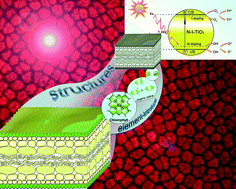The design and fabrication of efficient, cost-effective photocatalysts are required in order to ease global energy and environmental issues. In this paper, we have obtained a biogenic-TiO2 photocatalyst through a simple one step infiltration process which can replicate well the hierarchical architecture of kelp from the macro- down to the nano-scale. In addition, the nitrogen and iodine, contained in the original plant corpus, are self-doped into the resulting samples. UV-Visible diffuse reflectance spectra of the biogenic-TiO2 indicate that it has efficient light-harvesting capacity, especially in the region from 400 nm to 550 nm, and compared with the common N-TiO2, its band gap absorption edge exhibits a clear red shift due to the self-doping. Moreover, the biogenic-TiO2 possesses excellent photocatalytic properties proved by the photocatalytic activity of methylene blue degradation under solar energy irradiation. This work may provide the inspiration for the synthesis of further high performance photocatalysts based on the kelp structure and a new methodology for application of nature's plants and utilization of solar energy with biogenic materials.

You have access to this article
 Please wait while we load your content...
Something went wrong. Try again?
Please wait while we load your content...
Something went wrong. Try again?


 Please wait while we load your content...
Please wait while we load your content...